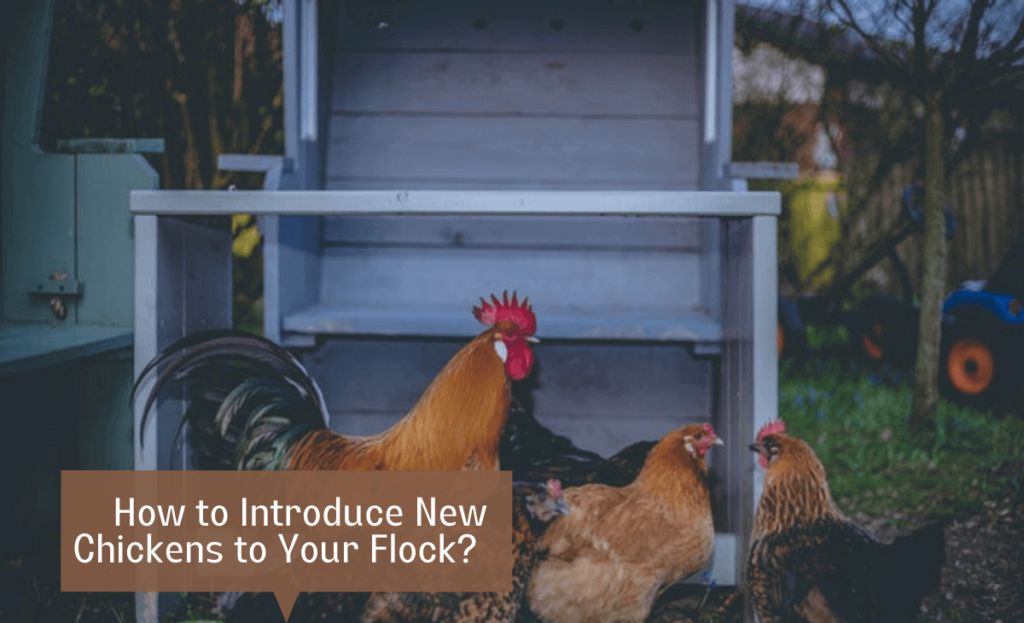Adding new chickens to an already established flock, or beginning from scratch with a fresh batch of chicks is challenging, but you can make the process much easier with the proper preparation, care, and management to make introducing new chickens to flock a success.
Raising chickens requires devotion and proper planning, which you must recognize. We frequently associate the arrival of baby birds in the spring with fresh beginnings and vitality, but it’s important to remember that the task of rearing them takes time and effort.
Before your new flock members arrive, make sure you have a long-term strategy and a space for them to reside. Your current flock’s pecking order will remain stable if you plan for future arrivals.
4 Steps for Introducing New Chickens to Flock to Existing Flock
ISOLATE
During the first stage of introducing new chickens to your backyard flock, it’s essential to keep them in a separate area from the other chickens. It will help avoid conflict in the established pecking order.
To begin, keep the chicks in a plastic storage container with a dust bath and roosting bars. When they outgrow their container in two to three weeks, place them in a brooder cage with a heat lamp.
Before long, when the daytime temps in your brooder cage and outside are the same, bring them out and put them in a playpen or a small coop. Getting them outside as soon as possible is healthier for them and much simpler to clean and maintain.
SEGREGATE
In the next stage, place a small pen inside your run where you’ll put the newcomers. The younger and older chickens will see each other and grow acclimated. You may also do something as basic as enclosing part of the run with chicken wire to restrict the mature chickens from mingling with the newcomers.
In colder climates, collect all the little ones in a simple carrier crate and bring them back inside your house or brooder cage before nighttime. Nighttime temperatures are still too low for them to safely stay outdoors where dangerous predators could be lurking.
However, if you live in a warmer climate, a small rabbit hutch inside your coop can work as transitional housing. Make sure snakes, rats, and mice cannot find their way inside the housing by making closing any holes larger than an inch wide. Doing so will keep your birds safe.
ACCLIMATE
Curiosity wears off after approximately ten days of the segregated setup making the subsequent face-to-face introduction smoother for the young and old chickens. But don’t be fooled by older chickens and their curiosity. Curiosity may still quickly develop into bad behavior. So, keep an eye on them.
INTEGRATE
When you’re ready to send the young ones out into the open with the other chickens, distract everyone with some goodies or treats.
A location for the young ones to hide, such as a branch or even a board set on bricks or cinder blocks, will be helpful.
Please take note that for the smaller ones, perching on branches helps keep them safe from the adult chickens, who only appear to be interested in chasing those who are on the ground. Also, outdoor perches in your run provide a resting area for your small ones.
Exceptional Circumstances When Introducing New Chickens to Already Established Flock
Introducing baby chicks to adults
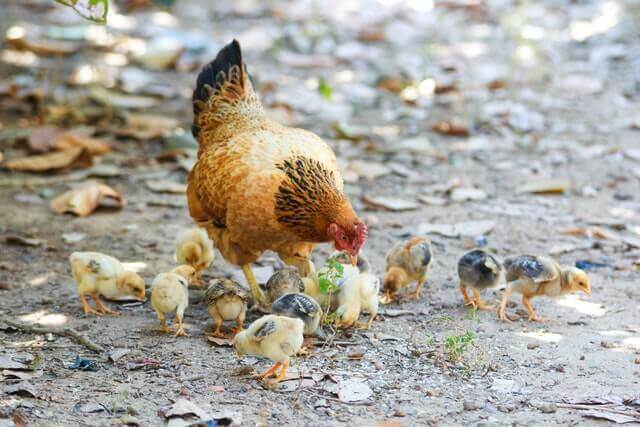
A broody hen that raises her chicks will defend them if you allow nature to take its course. However, if you purchase an incubator and attempt to hatch your own eggs, you will have difficulties integrating them immediately.
Whatever you do, do not rush integrating chicks into your flock.
Keep chicks in separate pens for the first 15-16 weeks of their life. Do not forget to give them plenty of food and a good baby chick waterer. Once the chicks’ feathers resemble the current chickens feathers, you can begin introducing them to the rest of the flock.
Mixing Breeds
The size disparity resulting from bringing in new breeds might provide a different set of problems.
Introducing a smaller breed like Silkies to a bigger breed (i.e., Jersey Giant) will result in the more considerable breed bullying to the smaller breed; hence it is unfair to do so.
Although there are still some backyard chicken keepers who have been able to blend smaller and bigger breeds into a single flock effectively, it hasn’t always been that simple for others.
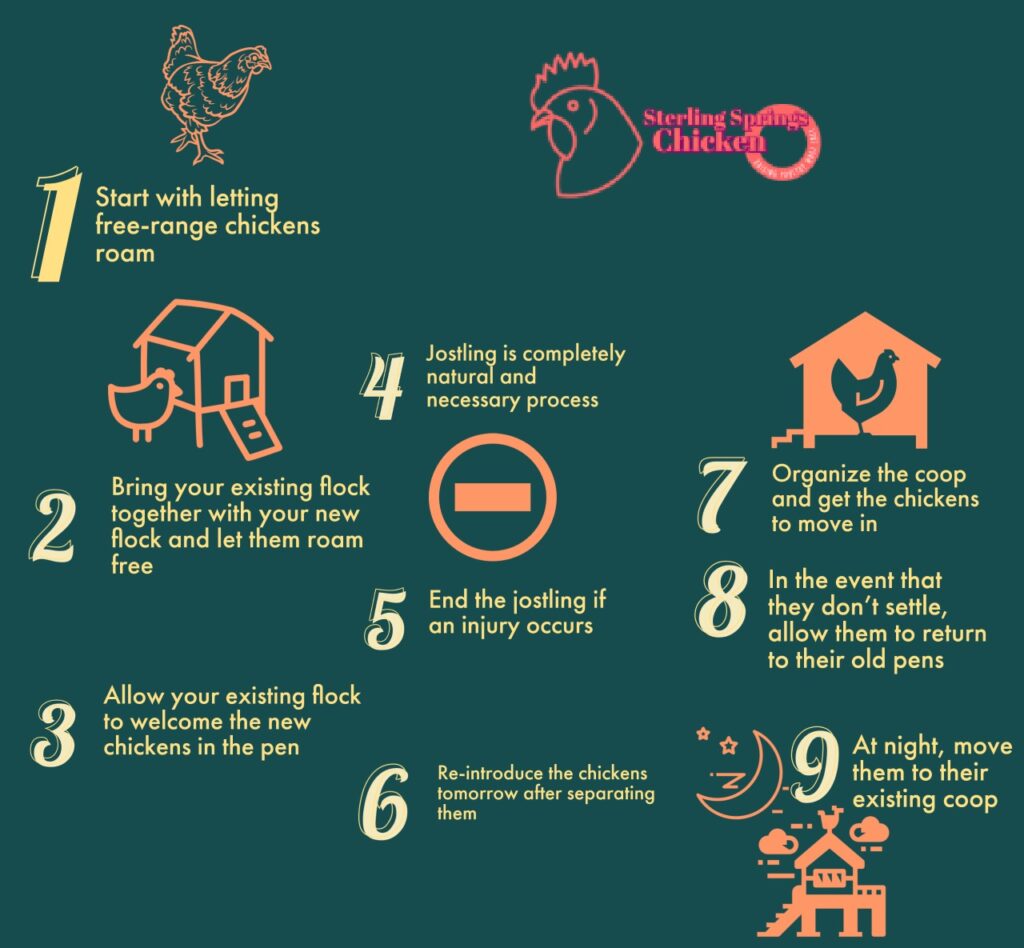
Flock Integration with Broody Hens
Flock integration is not an issue if you have a broody hen that has reared chicks, and the chicks’ behavior will change as the flock changes.
Mama Hen usually protects the new baby chicks from danger. Also, in rare cases, a dominant or violent rooster and adult birds may assault the chicks, although unusual.
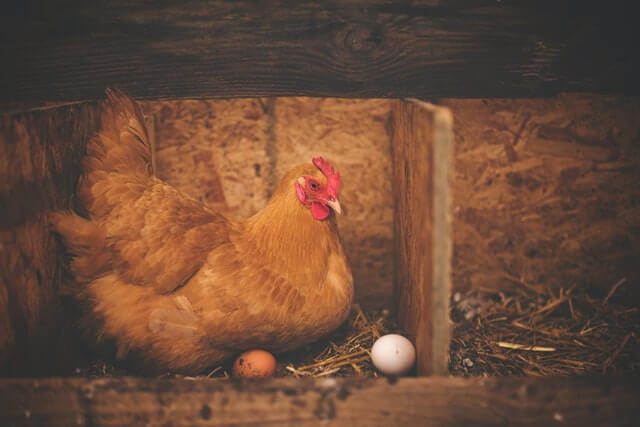
Introducing A Single Chicken
It isn’t straightforward and not suggested to integrate a single chick or pullet at a time. Every single bird in the flock will pick on the lone chicken.
Please make sure the new pullet is in an area she already knows. Then, take an existing flock hen that is calm and of a mid-order rank and place her with the newcomer for a week or two until the two appear to get along. Afterward, introduce them to the flock.
Adding Roosters
Adding a new rooster to an established flock is a terrible idea. First, the present rooster will likely regard it as a threat and attack it.
A fight between two roosters may cause serious injury to one or both roosters if not handled appropriately. Because it will still want to reunite with its flock, separating your current rooster while replacing it is best.
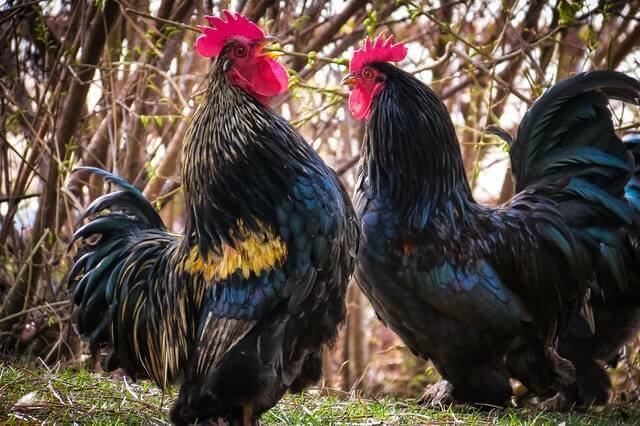
Bantams
Adding bantams to a big flock of chickens is not advised. Despite their ability to fly or flee from danger, a well-aimed peck with a standard-sized beak may do considerable harm. Having a coop of their own where they may feel safe and comfortable is essential for bantam chickens. It’s okay for them to roam about the farm, but they should still have their coop.
How to Mix Chickens of Different Ages
Gradual Introductions Are the Best
It’s preferable to introduce a new chicken to your flock gradually. It will give the established chickens time to get used to the new bird and provide the new chicken time to learn the pecking order.
Start by keeping the new chicken in a separate area, such as a dog kennel or a large wire cage. Then, place it next to the chicken coop or run, so the birds can see and smell each other but can’t physically interact.
After a few days, you can let the new chicken out into the coop or run, but keep a close eye on them. If there are any problems with the established chickens bullying or attacking the new one, put them back in their separate area until they’re better acclimated.
Eventually, the new chicken will become part of the flock and know its place in the pecking order.
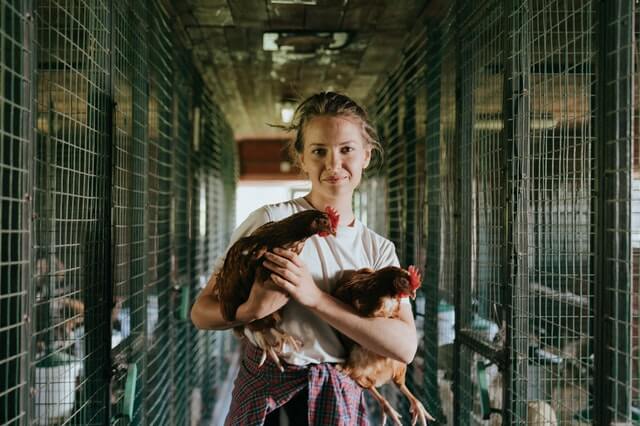
Methods for Introducing Chickens of Different Ages
When introducing new chickens to your flock, you may find that they are of different ages. This can be a bit more challenging, as the younger birds may not have fully developed social skills.
Here are a few methods to help you through this process:
Free Range Introductions
If you have a large enough yard, you can introduce new chickens to your backyard flock by letting them free range together. It is the easiest and most natural way for the chickens to get to know each other.
Allow the new chickens to go where you can see them. Let the new ones explore first because it will help them try out the environment. It also prevents them from being intimidated or stressed out.
Giving them the freedom to explore in an area with plenty of room can help prevent aggressive interactions.
Neutral Territory Introductions
If you don’t have a large enough yard for free-range introductions, or if your chickens are particularly territorial, you can introduce them in neutral territory.
A neutral zone can be anywhere, from a separate part of your yard to a friend’s home.
The key is that it’s a place where the chickens haven’t spent a lot of time and where they’re not familiar with the other birds.
Introduce the new chickens to the established flock in the neutral territory, and let them explore together and get to know each other.
Younger and less experienced chicks are let in first. Then, put the adult birds in the enclosure with the smaller ones after approximately 15 minutes.
Ensure that the birds have enough scratch and fresh food to keep them from fighting. Also, keep an eye on the younger birds and don’t allow them to be harmed.
After a few hours, you can move them back to the coop or run.
Reverse Flock Introductions
Introducing new chickens to an existing flock can be risky, so in this introduction method you start by adding older chickens to the new flock, one at a time.
Reverse introductions prevent any advantage an older chicken might have over the new chickens and allows the younger birds to establish themselves safely in their new environment.
Introducing new birds to your flock can be a great way of creating making space for younger birds. Reverse introductions create an even playing field where no one has the advantage over another, so this should help reduce issues and re-establish the pecking order!
Night Time Introductions
Allow at least two new birds to roost with your old birds in the evening. The idea is that all the birds would sleep together, preventing any potential conflicts.
The elder birds will naturally welcome the newcomers into their flock when the sun rises.
The results of this technique have been inconsistent. It works best when introducing various ages of chicks into the brooder box.
This method is also not suggested that flocks with known violent birds have significant size variances.
Things to Consider Before Mixing Chickens of Different Ages
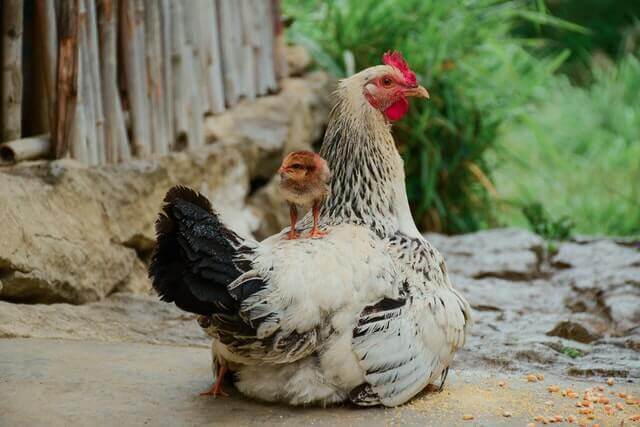
Introducing new chickens to an existing flock can be a great way to add some variety and create some space for younger birds. There are several different ways that you can go about introducing new chickens, depending on the size of your yard and the temperament of your entire flock.
Following these guidelines and learning basic chicken behavior can help your new introductions succeed.
Rules of Thumb
Consider your flock’s makeup before making any introductions.
- New hens of different ages are welcomed in a flock with a rooster.
- Roosters are the unquestioned kings of the pecking order, and older hens do not clamor for domination.
- A flock with one rooster should never get another. Inevitably, one or both roosters might become injured due to fighting each other.
- Suppose young chickens are rejected, despite following these recommendations. In such a situation, keep them apart until they reach the same size or developmental stage as the current flock members. Young hens’ health is harmed by having to use their energy resources to deal with stress, heal injuries, and compete for resources.
Are they in the same family?
Consider the lineage of chickens before combining them. Chickens hatched to the same hen will easily blend with the entire flock.
Until they are mature enough to fend for themselves, the mother hen will protect her young.
If you’re introducing chickens of different families, it’s best to do so slowly. Start by letting them see and smell each other through a fence. If that goes well, you can move on to the next stage of introductions to ensure harassment is kept to a minimum.
What breed are your chickens?
The breed of chicken can also play a role in how well they get along. Some breeds are known to be more docile than others, while some can be quite aggressive.
When you are introducing different breeds of chickens, be sure to do your research ahead of time. You may want to introduce the more docile birds first and see how they fare before moving on to the more aggressive ones.
When in doubt, it’s always best to err on the side of caution. Slow introductions will help reduce the risk of injury or stress for all involved.

Are the new chickens healthy and disease-free?
Quarantine new chickens for two weeks, preferably one month, to ensure they are free from any signs of disease before introducing them into your flock.
Older birds can be more prone to spreading illnesses that might affect younger animals.
Pro Tip
Proactively treat your coop and backyard area with MitesBGone Nesting Herbs to prevent and repel mites and chicken lice.
HOW TO INTRODUCE NEW ROOSTERS TO THE FLOCK
One of the main reasons to have a rooster in your flock is for his ability to fertilize eggs. However, many chicken keepers also enjoy the added benefit of watching the rooster strut his stuff and engage in protective behavior.
Before adding a rooster to an existing flock, it’s essential to understand how he will fit into the current social order. It’s not a good idea to purchase an adult rooster and throw him in among your hens.
When newcomers arrive, roosters will instantly strive to establish authority over them or even over other roosters. It implies that a new rooster must impress both the hens and the existing roosters in the flock before being accepted.
It’s crucial to understand how to introduce your new rooster to the older flock members since they might be violent. Remember that a young rooster, or cockerel, is easier to train than an adult.

Pre-Introduction Steps
Determine a Good Fit
Before introducing a new rooster to the flock, it’s essential to determine if he would be a good fit, and several factors should be considered.
If you have a young flock, it’s best to wait until they are a little older before adding a rooster. Likewise, if you have all-female chickens, adding a rooster is unnecessary.
If you have multiple roosters, it’s essential to ensure that the new rooster is of a different breed than the others. It will help to avoid any conflict.
The temperament of the new rooster is also essential. Some roosters are docile, while others can be pretty aggressive. It’s necessary to match the personality of the new rooster with that of your existing flock.
The First Night
On the first night, it’s essential to keep an eye on the new rooster. If possible, place the new rooster in a temporary cage for the quarantine period. Also, do not forget to provide him with enough food and water.
Quarantine
It’s essential to quarantine him before adding him to the flock. This step is critical in preventing the spread of any diseases.
The new rooster should be kept in a separate area from the rest of the flock for at least two weeks, but preferably four weeks. It will give this time to adjust to its new surroundings and monitor for any signs of illness.
Checking for Disease and Mites
It’s essential to check the new rooster for any signs of disease or mites before adding him to the flock.
The best way to check for mites is to part the feathers and look for any minor, dark bugs crawling around. Mites are tiny parasites that live off of the blood of chickens and can cause anemia and even death.
Look for any signs of illness such as sneezing, runny eyes, or lethargy, and check for disease. If the new rooster has any of these, treat them before being introduced to your backyard flock.

Introduction
Once the new rooster is checked for disease and mites, he can be introduced to the flock members. But, again, it’s best to do so at night when the chickens are roosting.
Place the new rooster in the flock and slowly introduce him to the other chickens. Don’t forget to provide him with a place to perch and access to food and water.
Monitoring
Monitor the new rooster closely for the first few days to ensure that he is adjusting well and has no signs of aggression.
If necessary, place him in a separate area from the rest of the flock. But, if all goes well, the new rooster will eventually be accepted into the already established flock members.
Cautions while Introducing new Chicken to old Flock
Quarantine Before Introducing New Chickens
An adult chicken’s risks of being sick or infected are more significant than a hatchery chick’s. Therefore, you can usually omit this step for chicks or pullets from a trusted supplier. However, before introducing new chickens to your backyard flock, they must be quarantined and vaccinated.
It’s essential to have a distinct area for your new chickens to live in when you bring them home. While they are confined, you want to ensure they are safe in their coop. An automated chicken coop door is one of the most excellent methods to strengthen your coop, while a chicken coop monitor is great for keeping a watchful eye.
The last thing you want to do is infect your current flock with a sickness you picked up from your new hens, so placing them in a separate coop lets you keep an eye on them and make sure they’re healthy.

There are a few things to monitor for during the quarantine period:
- Mites or lice infestation
- Scaly legs
- Fluid leaking from their eyes
- The comb is dull/shriveled
- Nostril blockage
Frequent hand washing is vital when visiting your new chickens and the rest of your flock during the quarantine period. Diligant hand washing will stop the transmission of illness and infection between the two camps.
Introduce birds in groups
It’s not always easy for solo chicks to join a group. So, introduce two or more chickens at a time, ideally if they are already familiar with each other! Introducing multiple chickens prevents the rest of the flock from isolating and bullying one chicken.
Only Introduce Birds of a Similar Size and Age
In the presence of smaller, weaker birds, chickens are capable of bullying. Therefore, aim for a similar size and age range when adding new birds to your flock to avoid conflict and bullying.
A smaller number of more experienced hens might suffer from stress if many fit, young chicks are adequately introduced to the flock.
If you have an established flock, it’s best to keep newborn chicks in their coop or enclosure until they’re strong enough to take on the higher-ranking birds in the pecking order.
NEVER Ever Put Baby Chicks in with an Adult Flock
A flock of mature hens or even older pullets should never have young chicks introduced to them. Please wait until the new chicks are eight weeks old before submitting them to the group. Only chicks born in a broody hen’s coop are exempt.
Start Slowly- Ease Them In
When it comes to expanding your flock, it’s preferable to place new additions near your current hens rather than among them. If feasible, confine them to a small, enclosed section of the coop; It will enable the hens to interact and get used to one another’s presence while also preventing them from becoming violent.
However, it’s essential to avoid making the chickens feel under attack or invading their homes. To maximize your chances of success, try to stick with the plan for at least one week.
Provide Distractions
When introducing new flock members, it’s good to add objects like bales of hay or lettuce hanging in the run. Then, rather than paying attention to the unknown female, they’ll be preoccupied with scratching and pecking at the straw.

Introduction in a New Location
It’s best to locate a new home for your old and new chickens. Being away from home makes older hens less protective and aggressive towards new girls. It throws them off.
Even in the best-managed environments, some amount of bullying is unavoidable in two groups. The flock’s pecking order will have been rearranged to accommodate the new girls, causing a flurry of conflicts.
If you have concerns about any of your new flock members, keep an eye on them and remove them as necessary.
Your older hens will quickly adjust to the newcomers, and peace will return to your flock in a few days.
Monitor the flock for success
The best way to monitor the success of chicken introductions is to observe the flock closely. If there is any fighting or aggression, it’s best to separate the birds and try again another day.
It’s also important to keep an eye on the food and water situation. Chickens can become stressed when they are competing for resources. Be sure to provide enough high-quality feed, shelter, and water for everyone so that no one gets left out.
With a little patience and planning, you can successfully introduce new chickens to your flock. Just be sure to take things slowly and keep an eye on the situation. With a little time, your chickens will be best friends in no time!
What To Know Before Introducing New Chickens
Chickens can be very particular about their place in the flock. When you introduce new birds, the existing chickens will have to re-establish the pecking order. This can result in some fighting and aggression.
Pecking Order And Flock Dynamics
The pecking order is the social hierarchy that exists in chicken flocks. It determines which birds get to eat first, drink first, and have access to the best resources. The pecking order is constantly changing as chickens jockey for position.
Survival in the wild depends on flock dynamics. Its dynamic keeps the flock in line and healthy. It is less common with backyard hens, but it occurs.
Survival in the wild depends on flock dynamics. Its dynamic keeps the flock in line and healthy. It is less common with backyard hens, but it occurs.
A flock is a self-contained entity in the wild. Wild herds have an alpha rooster and a few subordinates.
The primary reason for flocking is resource conservation. Food and water are limited in the wild. Therefore, the flock would defend its food supplies from other birds during times of scarcity.
Although chickens aren’t aware of sickness, barring access to the clan keeps them safe from possible infection. It isn’t cold-hearted, it’s survival of the fittest.
The top rooster may murder male progeny to force them from the flock to defend his females. It is to protect his status as a flock leader. A youngster may challenge him and take the community if he is weak or ill.
Typical Behavior
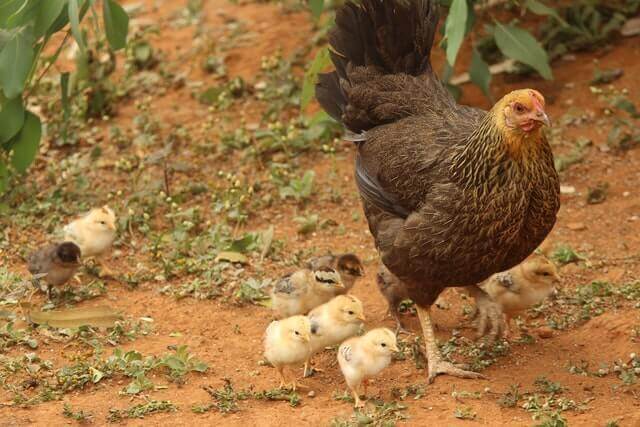
They will chase away any strangers who do not look like one of their own. Pecking, rushing, bullying, and intimidation are common.
Pecking may be nasty if the older hens band together and capable of killing another bird.
Most chickens will remain in small groups in the wild and not try to join another flock. However, while in a backyard flock, they don’t have much choice; therefore, we need to be cautious with the introductions.
How Long Will It Take Introducing New Chickens?
When you get a new flock of chickens, it can be a while before they acceptably socialize with the rest of your population. The pecking order gets disturbed and has to re-establish itself after introducing additional birds into its midst; it might take up to 6 weeks or more!
Quarantining
As the new hens arrive, they will be examined and treated for any signs of sickness. We can expect this process to take about a month. However, it allows time for all birds in our flock to remain healthy because they are checked out before being released onto their homesteads.
Visual Introductions
The chickens will need time to get used to having their new chicken friends around. But, a week should be enough for them!
Physical Introductions
You may only need meet once if you’re fortunate. But if you have an aggressive or territorial breed of chicken, your birds may be more violent. Hence, it may take three or four physical introductions before they are accepted. Be sure to research and understand your breeds.
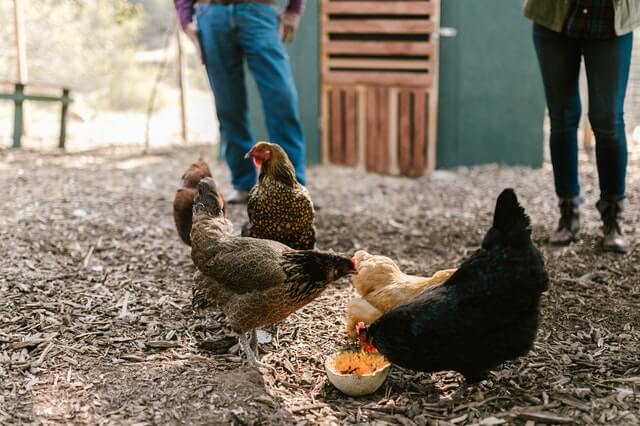
Settling In
After introducing the chickens, keep an eye on them for a week. Ensure they have enough food and water and check on their egg production – adding more hens may mean some will go off lay!
It will take about 5 to 6 weeks from when your new chickens arrive until all of them fully integrate into your current flock.
Aggressive Breeds
Several chicken breeds are considered very aggressive. If you’re thinking of adding new chickens to your flock, it’s essential to be aware of these breeds and have a plan for them.
Some are so hostile that they cannot coexist peacefully with other flock members. In such cases, not getting the chicken is better since an introduction may result in serious injuries or death.
Some of the most aggressive chicken breeds include:
- Asil
- Ayam Cemanis
- Buckeye
- Cornish
- Faverolles
- Sumatra
- Wyandotte
- Cubalaya
- Modern Game
- Old English Game
If you have any of these breeds of chickens, it’s essential to take extra care when introducing new birds to the flock. You may need to do more physical introductions or even quarantine the new hens for a longer period before submitting them to the rest of the community.
Common Problems and What to Do About Them
Chickens are social animals and need to be around other chickens in order to stay happy and healthy. When you introduce new birds to the flock, there can be some problems that arise.
Rushing Integration
One of the most common problems is when people try to rush the integration process. Chickens need time to adjust to their new surroundings and get to know each other.
Rushing the process can lead to a lot of fighting, stress, and aggression. It’s best to take things slowly and let the chickens do their own thing.
Not Introducing Everyone of the other common problems is when people don’t introduce everyone in the flock to the new birds. This can lead to some chickens feeling left out and becoming aggressive.
It’s important to make sure that everyone in the flock has a chance to meet the new birds. This will help them feel more comfortable and less likely to become aggressive.
Weak Chickens
There’s always one weak chicken in the mix. It will typically be the last to eat or drink, making it seem tense. It’s conceivable the chick will have picked on as well.
When it comes to integration, chickens reject weak or diseased birds because they endanger the flock. In some instances, a young chick will have placed in a separate coop with an older flock mate.
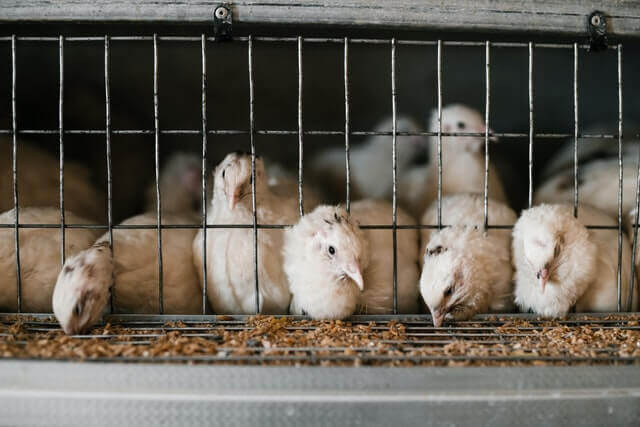
Aggressive Chickens
Overly hostile chickens may attempt to make life unpleasant by bullying the hens during their integration. Two possible outcomes may result from Its conduct. First, it may discourage chickens from laying and cause them discomfort. On the other hand, it’s likely that if the head rooster doesn’t like It, the youngster will be fighting the older rooster.
Biosecurity
Quarantine any chickens you receive from outside. Even though the birds you bought seem healthy, specific ailments take time to develop. You don’t want to infect your flock with infectious bronchitis or Marek’s illness.
Insufficient Resources
Another common problem is not having enough resources for the chickens. This can happen when people don’t provide enough food or water for the new birds.
Chickens can become very stressed when they are competing for resources. This can lead to aggression and fighting.
To avoid this, be sure to provide enough food and water for everyone. This will help the chickens to feel more comfortable and less likely to fight.
Tips for Introducing New Chickens to Your Backyard Flock
Introducing new chickens to your backyard flock can be a daunting task. There are a lot of things to consider, and you want to make sure that everyone stays safe and happy.
Add Equal Numbers
When adding new chickens to your flock, try not to do it solo. Instead, add more than one so that fights and bullying from the current pack will be distributed among them.
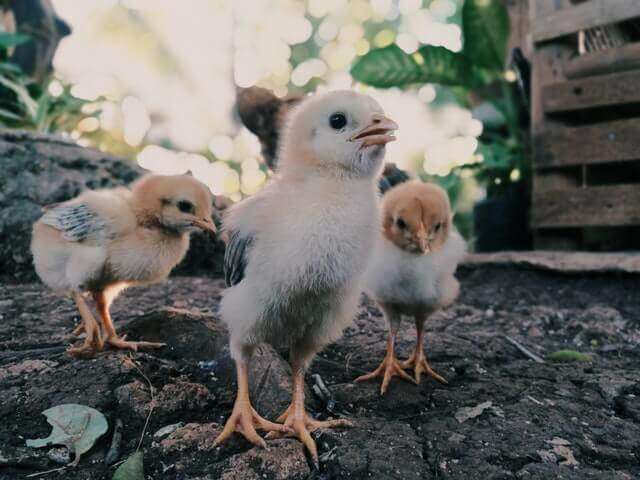
Relocate Both Flocks
A new coop and enclosure will have prepared when you bring in new chickens so that both the old and the new birds have a new place to start.
Same Size Matters
Introducing new chickens to an existing flock is not easy. First, you should only bring in birds that are the same size or smaller than your current population so they don’t compete with each other for food and space.
Extend Before You Introduce
Before introducing additional chickens to your current coop and enclosure, ensure adequate space for them.
Isolate Aggressive Birds
Put a chicken in isolation for a few days if you see that one of the chickens is becoming particularly hostile toward the newcomers. It will help to keep the aggressive bird under control. If you have pecking issues, you should also try Bumpa bits.
Distract With Treats
Maintain their interest and keep them engaged. Provide them with a lot of room and things to do.
Patience is Key
The entire process of introducing new chickens to your backyard flock can take weeks or even months. So be patient and let them get used to each other at their own pace.
Step Back for A Moment And Observe
It might be challenging to sit back and watch, but as long as it doesn’t escalate into anything gruesome or fatal, it’s okay to let it play out for a little longer.
The normal pecking order behavior will become apparent after many introductions of other chickens into the flock. Then, you’ll be able to tell whether they are being aggressive or not.
Protect Yourself
It’s always a good idea to be prepared to break up a chicken battle during introductions.
If you must interfere, wearing leather gloves and sturdy denim trousers will keep you safe from the flying beaks and claws.
Look, don’t touch
Allowing new birds to stay a few days or weeks within pecking distance of your flock is a good idea. A pen outside the coop or run is ideal. It is best not to use the same fence for both enclosures since the older hens will struggle through the wire.
Because the birds can see one other but not fight, they tend to become friends. However, it takes a few bloodless squabbles to establish the pecking order when the new birds introduce.
Have a Toolkit Handy
Keep towels, crates, and replacement cages available if you need to break up a fight among the flock members.
Try to keep a blood stop in your first aid kit if things become more gruesome.
Bullying Issues
When to interfere?
If you see one chicken constantly picking on another, you may need to intervene. This can be a difficult decision, as you don’t want to over-step your bounds.
The best way to handle this situation is to observe the chickens and see if the bullying is constant or just occasional. If it’s constant, you may need to separate the chickens.
However, if it’s just occasional, you can try to let them work it out on their own. Chickens are social animals and will usually sort out their differences eventually.
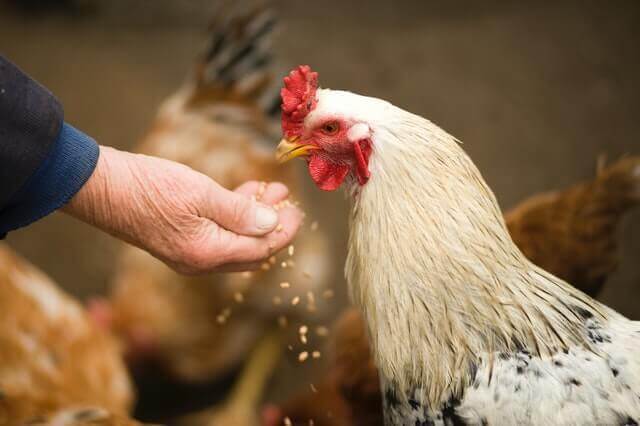
One way to stop bullying is to provide more space. If your chicken’s crowd, that can lead to more pecking and aggression. Instead, make sure the birds have enough room to move around and spread out.
You can also try adding a decoy chicken to the flock. It can be a stuffed animal or even a fake chicken. The bird will become the focus of the aggression, and the other chickens will leave the real birds alone.
If you have a rooster, he can also help stop bullying. He will help establish the pecking order and keep the other chickens in line.
If the bullying is severe, you may need to remove the aggressor from the flock. However, it will usually only be necessary if the bird is excessively pecking or attacking other chickens.
Bullying can be a severe issue among chickens, but you can successfully introduce new chickens to your flock with patience and preparation.
Summary
Keep in mind that chickens may be difficult and territorial, and introducing chickens to your flock will be challenging. However, with sufficient safeguards, there are things you can do to make it easier. First, always make sure that your new chickens are free from disease to avoid compromising your existing flock. Second, be patient and let the chickens get used to each other at their own pace. Third, be prepared to break up fights if they occur. And finally, be aware of the signs of bullying and know when to step in. You can successfully add new chickens to your backyard flock with these tips.
FAQs
When Can I Introduce New Chicks to The Flock?
It’s best to wait until the new chicks are at least four weeks old, but six is much better. The introduction time extends if the chicks are young. Also, it will give them time to develop some feathering and be a bit bigger to defend themselves better. By the time you permanently combine the flocks, the chicks would be around 10-12 weeks.
Will older hens kill chicks?
Suppose the chicks aren’t their own, yes. A hen on its alone might be harsh and brutal. Anything smaller than a hen is bullied, pecked, and even killed. When the chick survives and grows up, it will do the same.
There is uncertainty about what the pecking order accomplishes, but it is a part of their chicken nature. There’s no use trying to change Its heart because hens don’t care.
To prevent the older chickens from capturing and hurting the chicks, keep them apart until they are half grown. Old wood pallets on their side make good chick protection. The hens can’t go under it, but the chicks can; you can just increase it as they mature.
Why Have a Rooster?
Introducing a rooster to your flock might make some people cringe, and others chuckle, but it’s an integral part of their chicken nature.
Roosters serve as protectors for the hens and play an essential role in their social order. The presence of a good rooster allows the hens to rest since they no longer have to be constantly attentive to predators.
Also, the hens can become quite aggressive as they battle for dominance without a rooster.
How do roosters attack?
Roosters attack by running at an opponent with their beak open, striking with their legs, or both. They will sometimes jump on their opponent’s back and peck at the head. Finally, if they can’t get to their opponent’s head, they’ll try to peck at any other vulnerable spot.

